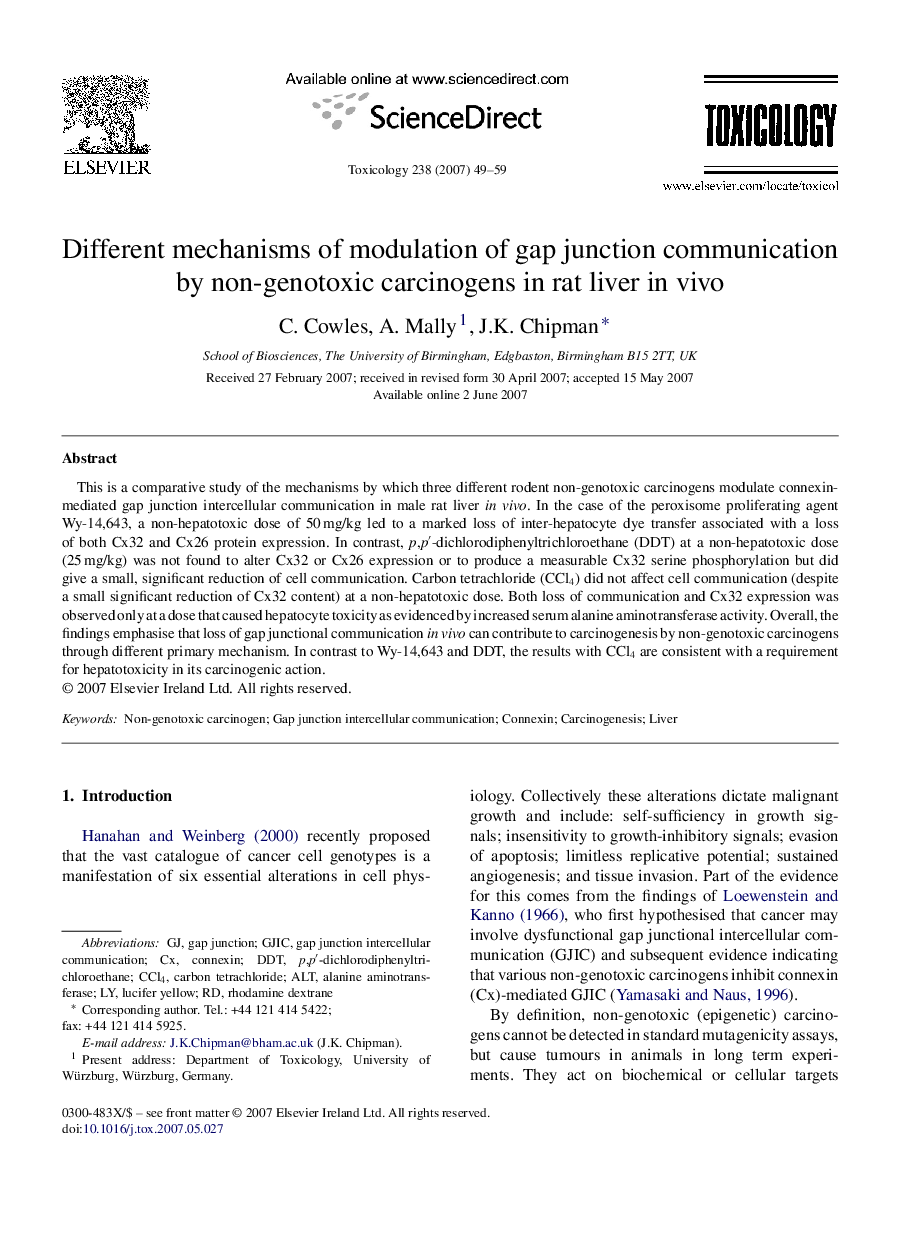| Article ID | Journal | Published Year | Pages | File Type |
|---|---|---|---|---|
| 2597356 | Toxicology | 2007 | 11 Pages |
This is a comparative study of the mechanisms by which three different rodent non-genotoxic carcinogens modulate connexin-mediated gap junction intercellular communication in male rat liver in vivo. In the case of the peroxisome proliferating agent Wy-14,643, a non-hepatotoxic dose of 50 mg/kg led to a marked loss of inter-hepatocyte dye transfer associated with a loss of both Cx32 and Cx26 protein expression. In contrast, p,p′-dichlorodiphenyltrichloroethane (DDT) at a non-hepatotoxic dose (25 mg/kg) was not found to alter Cx32 or Cx26 expression or to produce a measurable Cx32 serine phosphorylation but did give a small, significant reduction of cell communication. Carbon tetrachloride (CCl4) did not affect cell communication (despite a small significant reduction of Cx32 content) at a non-hepatotoxic dose. Both loss of communication and Cx32 expression was observed only at a dose that caused hepatocyte toxicity as evidenced by increased serum alanine aminotransferase activity. Overall, the findings emphasise that loss of gap junctional communication in vivo can contribute to carcinogenesis by non-genotoxic carcinogens through different primary mechanism. In contrast to Wy-14,643 and DDT, the results with CCl4 are consistent with a requirement for hepatotoxicity in its carcinogenic action.
